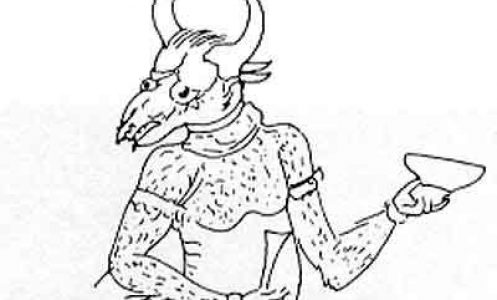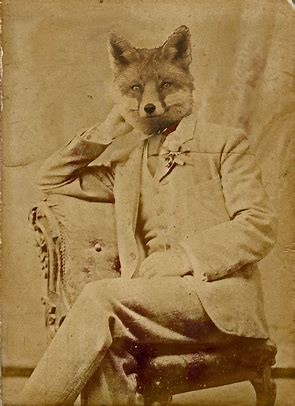
| Vulpes – foxes genus Vulpes mammal genus – a genus of mammals Canidae, family Canidae – dogs; wolves; jackals; foxes Vulpes vulpes, red fox – the common Old World fox; having reddish-brown fur; commonly considered a single circumpolar species the fox through history – Aesop’s The Fox and The Crow (5th Century BC) A season’d Scrivener, bred in Office low, Full often mocks, and dupes the gaping crow Imbued with human vices (or virtues) You are; Clever,Calculating,Sly,Duplicitous, the trickster, the hustler, the con man,the malign flatterer,the rake,fake gentleman. They vilify you in fables and nursery rhymes, fairy tales and films You kill for the sake of killing (unlike those that hunt you)You prey on man’s own animals, kept for slaughter/You are therefore vermin. Bible Studies website – The proverbial cunning of the fox is alluded to in Ezekiel 13:4 and in Luke 13:32 where Our Lord calls Herod “that fox” “Reynard” – Chaucer’s wicked fox in “The Nun’s Priest Tale” in The Canterbury Tales” of 1390 The first complaint made Isegrim the Wolf on Reynart. ISEGRIM the Wolf, with his lineage and friends, came and stood before the King, and said, “High and Mighty Prince, my Lord the King, I beseech you that through your great might, right, and mercy, that ye will have pity on the great trespass and the unreasonable misdeeds that Reynart the Fox hath done to me and to my wife: that is to wit, he is comen in to my house against the will of my wife, and there he hath bepissed my children whereas they lay, in such wise as they thereof ben waxen blind”. Br’er Fox and Br’er Bear (also spelled Brer Fox and Brer Bear, / ˈ b r ɛər /) are fictional characters from the Uncle Remus folktales adapted and compiled by Joel Chandler Harris. In the animated sequences of the 1946 Walt Disney -produced film Song of the South like in the tales, Brer Fox is the stories’ antagonist, while Brer Bear is his dim-witted henchman. The Fox and the Cat are a pair of fictional characters who appear in Carlo Collodi’s book The Adventures of Pinocchio. Both are depicted as con-men, who lead Pinocchio astray and unsuccessfully attempt to murder him. The pair pretend to sport disabilities; the Fox lameness and the Cat blindness. The Fox is depicted as the more intelligent of the two, with the Cat usually limiting itself to repeating the Fox’s words. |
| The Gingerbread Man – In some variations, the fox feigns deafness, drawing the Gingerbread Man closer and closer. Then the fox snatches and devours him. In other versions, the Gingerbread Man halts in his flight at a riverbank, and after accepting the fox’s offer to ferry him across, is convinced by the fox to move ever-forward toward the fox’s mouth. Aaah poor fox. Much maligned animal. They ritualise your murder. Smear your blood on the faces of the initiates. Death Cult Sadists. They wear the blood-red coats of the hunter. They breed their hounds for the chase. They are lawless as they are above the law. History of Recreational Hunting (the GentlemansGazette.com) Traditionally, the benefit of owning property meant the right to hunt and rather than living on someone else’s land, the noblest of men would seek out their own estates. Hunting has, for the most part, been a recreational sport since Assyrian kings hunted lions from their chariots. As Royals, they believed any land within their kingdom was their entitled property, and so hunting was also a way for the nobility to demonstrate dominance over their people. As the game moved away from inhabited lands, forests became known as hunting reserves, and Royals would mount their steeds and with a hound beside them, tread into the reserve. As the 12th century came about, gamekeepers were charged with monitoring the big game population in the forests and smaller game in the warrens. Despite hunting being a sport enjoyed by all demographics, England decided to regulate it due to the dwindling numbers of wildlife and those without a status of nobility were no longer hunting, but poaching and, therefore, subject to severe punishment by the courts. It became a stylized pastime of the aristocracy and an arena for fellowship as well as military training. Hunting was no longer a right, but a privilege and measurement of one’s class. Today, hunting is enjoyed by men and women from all backgrounds. While there are certainly some connotations of social structure within groups of hunters, it is a pastime treasured by many and one that is growing in popularity around the world. The bloodsports of the Royal Family (Daily Telegraph) The Royal Family has a long tradition of enjoying bloodsports, although it has, on occasion, proved a risky passion. In 1100, King William II was killed by an arrow while hunting deer in the New Forest and more than 900 years later in 2001, the Prince of Wales fractured his shoulder after he fell off his horse while hunting. Henry VIII was a passionate hunter and in 1543, built a special hunting lodge known as the Great Standing in Essex. Surrounded by 6,000 acres of parkland, it was constructed on a grandstand or platform that allowed guests to both view the hunt from a high vantage point and participate in the shoot their crossbows from the upper floors. King James I was an avid fan of greyhound coursing and built a hunting lodge in Newmarket. In 1619, he ordered the release of 100 hares and 100 partridges every year at Newmarket races to maintain the quality of hunting in the area. King Edward VII provoked controversy in 1868 when he chased a deer from Harrow through Wormwood Scrubs to the Goods Yard at Paddington Station, where it was killed before the astonished eyes of railway guards and porters. His son, George V was a passionate game bird enthusiast and transformed the once elitist sport into a more mainstream sport. In 1913, a party led by George V killed 3,937 birds in one day. He also shot 21 tigers on a hunting trip to India. The Queen’s father, George VI, was also a shooting enthusiast. On January 24, 1952 – his last shoot – his party shot 90 pheasants, 17 rabbits, two pigeons and three mallards. His wife, the Queen Mother, had a fondness for fly fishing and would travel to Birkhall on the Balmoral estate in Scotland, for a fishing break every summer, where she fished on the River Dee until well into her eighties dressed in her customary waders, Macintosh, hat and pearls. The current generation of the royals are just as passionate about bloodsports as their ancestors. Prince Charles and Princes William and Harry are keen shotsmen and stalkers and members of the royal family are said to have been deeply “disappointed” when the hunting ban was introduced. |
What was seen is unseen; what was sensed becomes senseless.
League Against Cruel Sports website
IS FOX HUNTING ‘PEST CONTROL’?
Fox hunting is not a credible form of pest control. Hunters claim that they are helping farmers by killing foxes, but this is a senseless argument that most people no longer believe. The League does not believe that there is any requirement for lethal fox control, but even if there was, then hunting is neither a humane nor effective way of doing it.
Any suggestion that fox hunting is about ‘pest control’ can be dismissed very quickly by the fact that hunts have been caught capturing and raising foxes purely so they can then be hunted. In May 2015, a League investigation revealed 16 terrified fox cubs held captive in a barn linked to a fox hunt in Yorkshire. We rescued them, took them to a vet, and sadly one died, but we released the others to safety. We are proud to have protected those foxes.
Map of Cheshire Hunting lands circa 1830
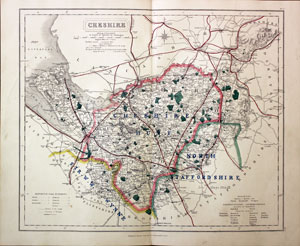
Cheshire Hunt Country and History
The country which is about 25 miles square, covers most of Cheshire. It is flat, dairy country with a high proportion of grass and hedges. Good scenting country; going is excellent. Best centres: Tarporley and Nantwich. The Cheshire Hunt has tremendous support from farmers and landowners within its hunted country. Hounds go out about 80 times per season. There is a long tradition of hunting in Cheshire. Participants come from all walks of life. At present we have a large number of farmers who are members and subscribers as well as businessmen and tradesmen from local towns and some further afield. Throughout the season the Hunt is invited for lawn meets at farms, private houses and public houses. These are well organised and held in fields and private yards were (sic)everyone is made very welcome.
Socially, the Hunt holds hunt balls, summer dances, hot pot suppers, lunch parties and in some years a pantomime. Outside activities include an annual point-to-point, pony club events, hunter trials, a puppy show and around six or seven church/charity/hunt fund raising fun rides. For countryside conservation there is a hedge laying competition followed by a late lunch in a local pub and some cover laying work done. The Cheshire itself directly employs three people and generates employment for other people. Hunt followers employ many part time horse helpers and grooms, and local blacksmiths, veterinary surgeons, feed merchants and saddlery shops are all busy during the hunting season and must also generate extra employment. Hunting is a wonderful way of uniting the countryside and teaching everyone to help each other.
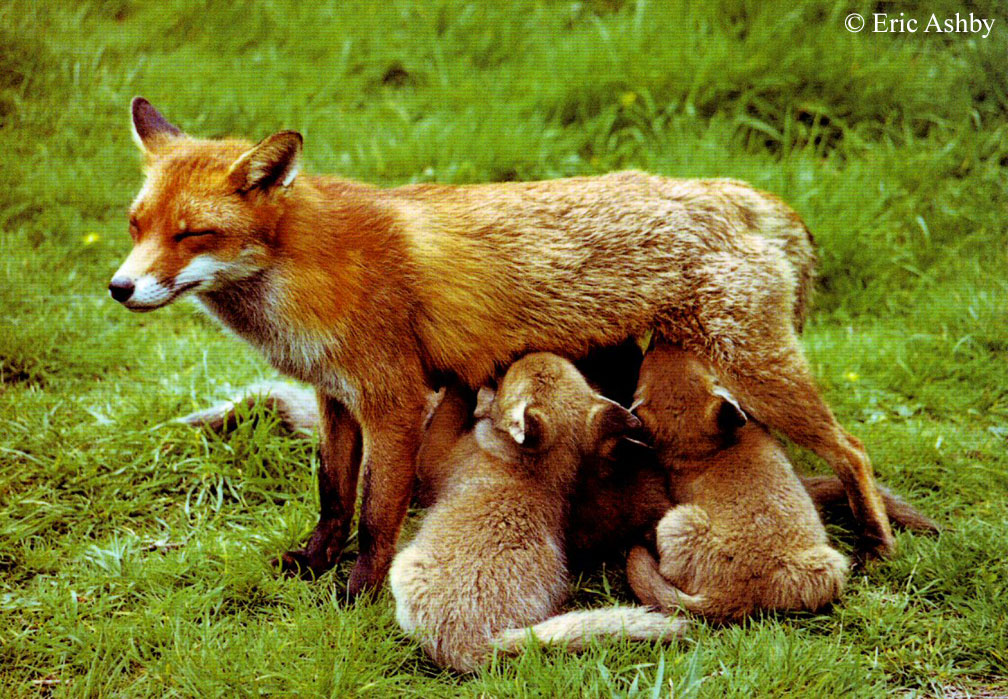
Vulpes 1
does she not need food?
does she not need to feed and suckle her young?
there is no sentiment in sex
there is no nobility in nurture
the genes gestate themselves
action!
the teeth and walk of the hunter
action!
the tail and shape of the hunted
there is a hand in this hatred
there is symbolism in this chase
if boundaries and bondage
to soil and rivers
farms and forest
fields and vales
restrict us to the flat earth
then shape our paths
towards oblivion
why sate our terror in blood?
what does the fox say?
who gave you dominion over the earth?
this land is not YOUR land
this land is No Man’s Land
this land is MY land
my shadow was seen
upon these fields
long before yours
and my language is
more ancient than yours
You are guests in our lands
We will still have our empire
Long after yours has fell way
Ape man bonded to the soil
Cold and hairless
Destined to die in the cold
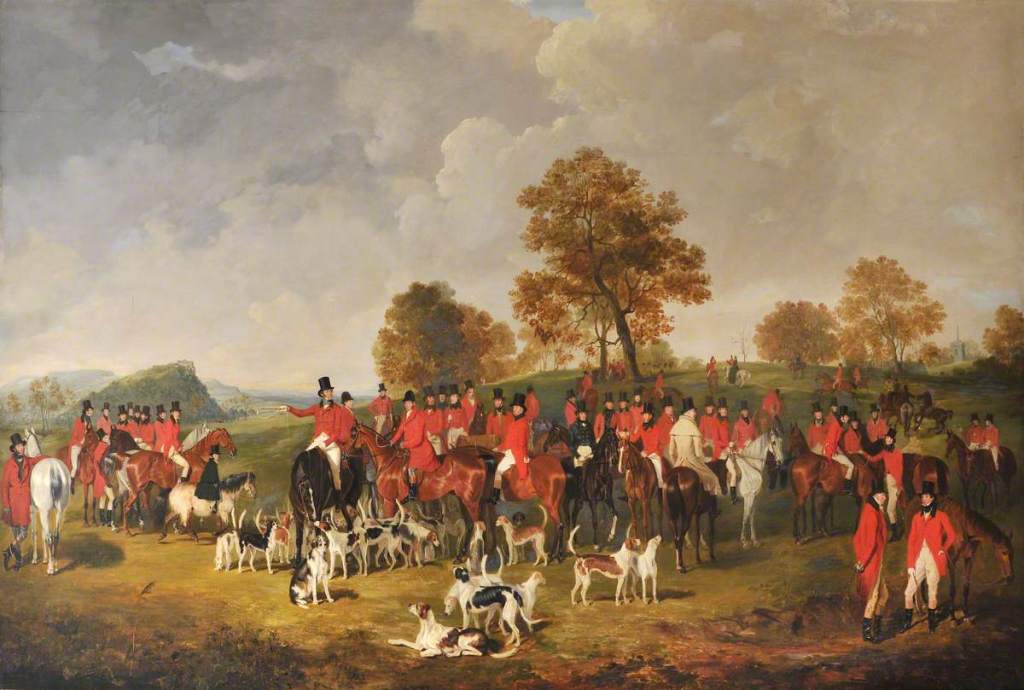
The Cheshire Hunt 1839, by Henry Calvert at Tatton Hall
Dominating the Entrance Hall, this vast painting depicts a meeting of the Cheshire Hunt in the countryside between Tarporley Church and Beeston Castle.
Three generations of Egertons are depicted: Wilbraham Egerton 1781-1856, his son William Tatton Egerton, later 1st Baron, 1806-1883, and his grandson Wilbraham Egerton, later 2nd Baron and Earl Egerton 1832-1909.
Calvert reputedly took sketches of the huntsmen at their local hostelry and meeting place, the Swan Inn at Tarporley, in preparation for the finished work. One such preparatory sketch, a painting of William Tatton Egerton, can be seen in the Egerton Exhibition Room
Game on!
We enclose the land and remove and subtract
Overlordship and ascent
The hedges and fields
The woodlands and lakes
Conform to our own design
For we are Gods and kings
We are lords and dukes
We are the bloodline of the chosen
Horsemen
Knights
Nobles
Chevaliers
Cavaliers
Cavalrymen
Grosvenor
Egerton
Cholmondeley
The Cheshire Hunt
The information in the following table is drawn from the survey of land ownership carried out in all counties in England in 1873 and published in 1875 by Her Majesties Stationery Office. There is a copy at the Cheshire County Record Office.
At this time the census shows that the population of Cheshire was 561,201. There were 502 parishes, with 110,449 inhabited houses.
The survey of land ownership was initiated by Lord Derby to try to rebut the claim that land ownership was in the hands of a very small number of people. The result was a resounding defeat for Lord Derby’s view.
Cheshire was among the counties where the old gentry families maintained their position very strongly to the end of the 19th century and into the 20th century. In this table, I have not included all those with more than 1000 acres but I have included entries for the gentry families discussed elsewhere on this site. Some of the landowners had land in other counties.
In Cheshire, those with more than 10,000 acres were John Tollemache (25,380), the Duke of Westminster (15,001) the Marquess of Cholmondeley (16,842), Sir H. D. Broughton (13,832), and Lord Crewe (10,148).
Come now, see how they prospered! These ancient and noble great landowners of Cheshire.
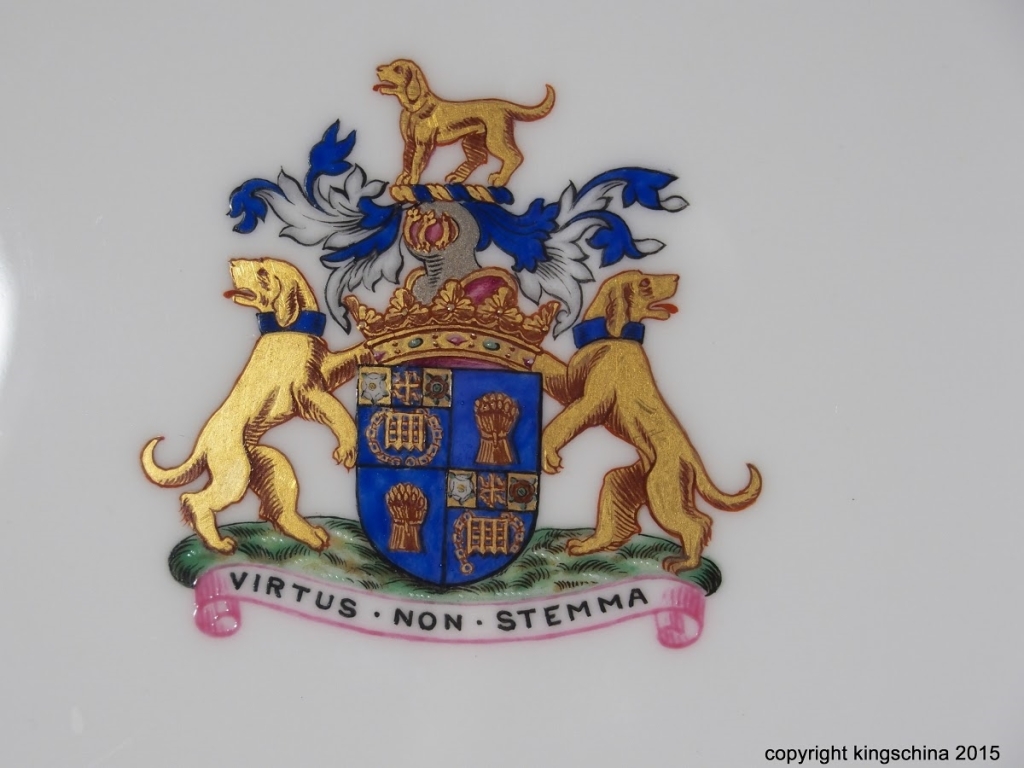
The Grosvenor Family
Virtus Non Stemma (Virtue Not Lineage)
Not lineage? Here’s the lineage
The Grosvenors traditionally trace their descent from Gilbert Grosvenor (le gros veneur or master of the hunt), nephew of Hugh Lupus, Earl of Chester, who held from his uncle, William the Conqueror, all the lands of Cheshire (excepting those of the Bishop of Chester).
Eaton has been the home of the Grosvenor family since the early 1440s, when Ralph Grosvenor of Hulme in Cheshire married Joan, the heiress of Eaton. From the fifteenth century onwards, the Grosvenor family steadily increased its landholdings, finances and status in the community. Particularly profitable from the 1580s onwards were the rents and royalties from mines of coal, stone and lead in North Wales.
The family finances were somewhat drained in the 1640s when the Second Baronet had to pay a fine of several thousands of pounds for supporting the King in the English Civil War. However, by 1677 the coffers had been replenished, and the failure of another suitor to provide the promised funds for the hand of Mary Davies enabled the Third Baronet to step in.
This marriage brought into the Grosvenor family an area of boggy marshlands which, again by harnessing the wealth generated by the minerals in North Wales, were later developed to become the prosperous Mayfair and Belgrave areas of London.
In the mid-twentieth century an entrepreneurial decision was taken to diversify by developing the Annacis Island industrial estate in British Columbia. This was the beginning of what was to become an international enterprise with offices, in North America, Europe, and Asia Pacific (and, for a number of years, Hawaii and Australia).
Family members were elevated through the ranks of nobility to Hugh Lupus, First Duke of Westminster in 1874 – the last of the non-royal dukedoms to be created. Thus quirks of fate, good marriages and fortuitous circumstances have influenced the Grosvenor family and the line of succession as the title passes through the male line in a sometimes complicated manner.
Quirks of fate?
Good marriages?
Fortuitous circumstances?
Land theft!
Aristocratic incest!
Economic rape!
From 1066 to 2019 – a family inheritance almost 2,000 in the making – and now we have….
Meet Little Hugh!
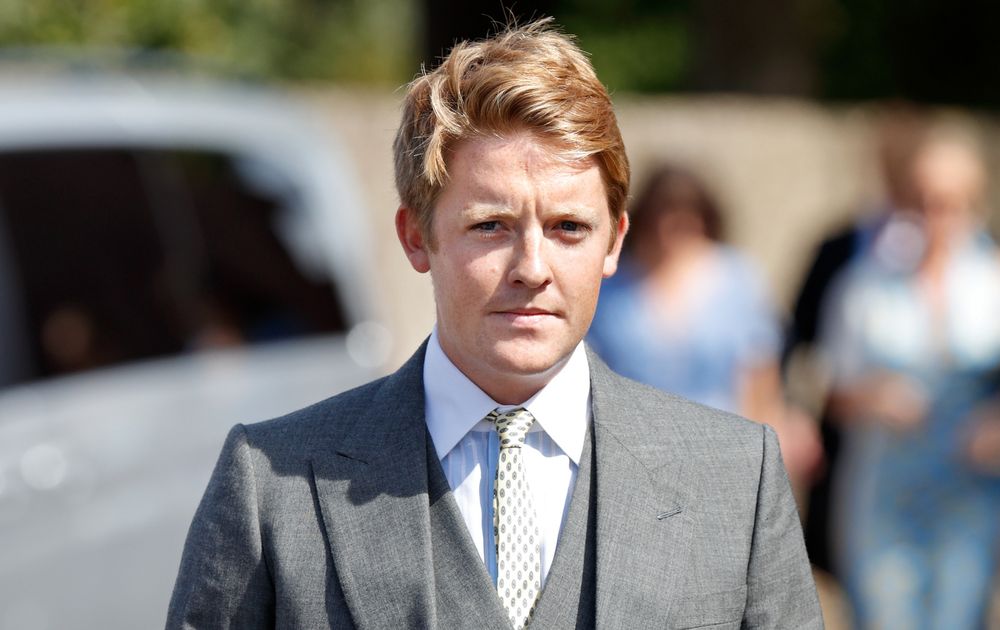
New Duke of Westminster inherits £9bn fortune aged 25
He is godfather to a future king, and now owns a large chunk of the most exclusive parts of London. At just 25, Hugh Richard Louis Grosvenor, who has become the 7th Duke of Westminster after the sudden death of his 64-year-old father on Tuesday, will inherit a family fortune estimated by American business magazine Forbes at about £9bn, and the ancestral seat Eaton Hall in Cheshire.
Though the third of four siblings, the duke, previously known by the honorary title Earl Grosvenor, is the only son of the late Duke of Westminster and his wife, Natalia.
Little is publicly known of the former student of countryside management at Newcastle University. His family guarded his privacy as he was growing up as heir apparent to the vast fortune, which now makes him the third wealthiest landowner in the UK, and, according to Forbes, the 68th wealthiest person in the world.
He has kept largely out of the limelight, though found himself the subject of media attention when he became the youngest and wealthiest of Prince George’s godparents.
His 21st birthday party at Eaton Hall, which reportedly cost £5m, also made the newspapers. He hosted about 800 guests, including Prince Harry, at the “black tie and neon” bash, where comedian Michael McIntyre and hip-hop duo Rizzle Kicks topped the bill.
Guests who wanted to give a gift were asked to contribute to the young earl’s large wine collection. He told the Chester Chronicle at the time: “The party was simply amazing – a birthday and a party I will never forget. It is the beginning of a new era in my life and I look forward to the challenges that lie ahead.”
Though the 7th Duke of Westminster has two older sisters, he inherits the title and estate, which includes 190 acres in Belgravia and thousands of acres in Scotland and Spain, through the rule of primogeniture, which puts male children ahead of female siblings irrespective of age. The primogeniture law for the British monarchy was abolished in 2013 before the birth of the Duke and Duchess of Cambridge’s first child, Prince George.
When you’re a boy
You can wear a uniform
Boys keep swinging
Boys always work it out
Uncage the colours
Unfurl the flag
Luck just kissed you hello
When you’re a boy

Inherit The Wind
Had the Grosvenor estate bequeathed to the new Duke of Westminster been liable for 40% inheritance tax, the amount owed to the Treasury would have been not far off the government’s entire death duty take for the last financial year.
Hugh Grosvenor, however, avoids a significant cut to his £9bn inheritance because the estate is held in a trust.
Britain’s generous trust law ensures that the country’s largest fortunes are largely kept intact. This is borne out by statistics which show that duties are a modest source of revenue for the Treasury. HMRC collected total tax of £534bn in 2015-16, of which inheritance tax receipts represented £4.7bn.
“The benefits of trusts are that they don’t form part of somebody’s estate,” says Ian Dyall, a manager at the financial adviser Towry. “In a discretionary trust, you have a whole pick list of potential beneficiaries which the trustees can choose to appoint benefits to. Because of that, you can’t point a finger to any potential beneficiary and say that’s your money. Money can stay in the trust and cascade down from generation to generation and nobody pays inheritance tax on it.”
Instead of one-off taxation, trusts are subject to charges every 10 years from the anniversary of their creation. Known as the inheritance tax periodic charge, it can amount to 6% of the funds held. There are, however, plenty of loopholes. Agricultural and business property relief applies, and the Grosvenor assets will have been managed to take full advantage of that.
The estate has been divided into three portfolios
Grosvenor
The privately owned property business has £11.8bn in assets under management. At its heart is the 300-year-old Grosvenor estate in London, which began in 1677 as 500 acres of land including Mayfair and Belgravia. Its holdings range from hi-tech office space in Silicon Valley and a science park in Edinburgh to the freehold on the current US embassy in Grosvenor Square. The jewel is Eaton Square, built close to Buckingham Palace and the Houses of Parliament during the housing boom that followed the Napoleonic wars.
Run as a separate legal entity with its own chief executive, Grosvenor Group paid £58m in tax on profits of £527m in 2015, and has 520 employees on its payroll. Its holdings are largely expected to qualify for relief from the inheritance tax periodic charge.
“Property is at the frontline over what qualifies and what doesn’t,” said Dyall. “If you run a hotel, that’s a business. If you have a rental property and all you do is collect the rent, that’s not a trading company. That’s an investment.”
Wheatsheaf
Set up in 2012, Wheatsheaf employs 450 people and invests in food, energy and water security. It runs Grosvenor Farms, one of the largest farms in the UK with more than 6,000 acres in Cheshire and a herd of 1,400 dairy cows. Other businesses include the UK’s largest bull stud, Cogent Breeding, and a hydroelectric plant on the Reay Forest estate in Scotland.
With its emphasis on food production, job creation and trading rather than land holding, Wheatsheaf assets are also likely to be exempt from the inheritance tax periodic charge.
Family Investment Office
The Family Investment Office manages rural estates in Sutherland, Lancashire, Spain and the family seat at Eaton Hall near Chester. It also takes care of stock market and other financial investments, the charitable Westminster Foundation, and a fine art collection that includes works by Velásquez, Stubbs, Rembrandt and Lucian Freud. The office employs 470 people across its rural estates. It is likely some of its assets, particularly cash investments, will not qualify for periodic tax relief.
Grosvenor 2018 Review
Our approach to taxation aims to be consistent with our reputation for quality, integrity and social responsibility. We respect not only the letter of the law but also its underlying intention.
Except inheritance tax it seems. They have form in this area.
From MoneyWeek
Has the family always been good at tax planning?
Apparently not. According to The British Tax System, a 1980s textbook co-authored by Mervyn King, “the largest sum ever paid in death duties, by a considerable margin, was the £11m [more than £200m in today’s terms] paid on an estate estimated at between £40m and £60m on the death of the third Duke of Westminster” in 1963. It seems the Grosvenor family learned rapidly from the blow, however.
When the fourth duke (a cousin of the third) died in 1967, his estate pulled off something of a blinder. First of all, the declared estate was now just £4m. And second, they convinced the taxman that it should be exempt from estate duties.
How did they do that?
The taxman gave up his slice on the grounds that Colonel Gerald Hugh Grosvenor had died of wounds incurred on active service during World War II – despite the fact that he had survived a further 22 years and the cause of death was cancer. Meanwhile, the next duke, the fifth, also had notably savvy estate planning in place. When Robert George Grosvenor (the father of the duke who has just died) passed away in 1979, press coverage reported that the family fortune was now some £650m, yet the duke’s declared personal estate, according to the Mervyn King book, was expected to be less than £5m.
Virtue Not Lineage?
See how they prospered…….
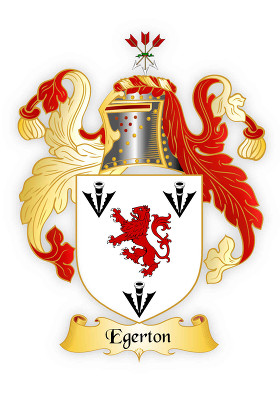
The Egerton Family
The Egertons are an ancient Cheshire family, seated at Oulton Park near Tarporley since the Middle Ages. An ancestor of the 1st Baronet, William le Belward, took the surname of Egerton from the lordship of Egerton, which he inherited.
In 1617, Roland Egerton was created a baronet (see Grey Egerton baronets). He later represented Wootton Bassett in Parliament and married Bridget, sister and co-heir of Thomas Grey, 15th Baron Grey de Wilton.
In 1784, the 7th Baronet was created Baron Grey de Wilton and in 1801 he was further created Viscount Grey de Wilton and Earl of Wilton. These titles were created with special remainder to the second and the younger sons successively of his daughter Lady Eleanor Egerton, who married Robert Grosvenor, 1st Marquess of Westminster.
On Lord Wilton’s death in 1814 the barony became extinct, while he was succeeded in the viscountcy and earldom according to the special remainder by his grandson Thomas Grosvenor (1799–1882), who assumed the surname of Egerton.
The Grey Egerton baronetcy passed to a distant relative, the 8th Baronet. The ninth Baronet was in 1825 granted by Royal Warrant the right to assume for themselves only the additional surname of Grey and the arms and supporters of Grey de Wilton. The viscountcy and earldom of Wilton continued to descend in this branch of the family until the death of the 7th Earl in 1999.
When he died without children, his titles passed to Francis Grosvenor, 6th Baron Ebury (b. 1934), a descendant of Robert Grosvenor (1801–1893), 1st Baron Ebury, the third son of Robert Grosvenor, 1st Marquess of Westminster and his wife Eleanora Egerton, daughter of the 1st Earl of Wilton.
From another branch of the family, Thomas Egerton (1540–1617) held the office of Lord Chancellor from 1603 to 1617; he was created Baron Ellesmere in 1603 and Viscount Brackley in 1616.
The 2nd Viscount (1579–1649) was created Earl of Bridgewater in 1617 and the 4th Earl (1681–1745) was made Duke of Bridgewater in 1720. On the death of the 3rd Duke (1736–1803), the dukedom became extinct. The 3rd Duke of Bridgewater was buried in the Egerton family vault in Little Gaddesden Church, close to Ashridge.
ARE YOU KEEPING UP WITH THIS??
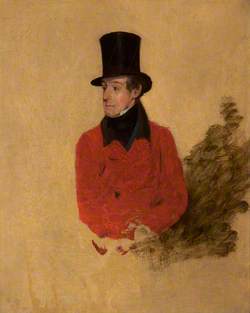
The earldom of Bridgewater passed on to the late Duke’s cousin John Egerton (1753–1823), who became the 7th Earl. The earldom of Bridgewater eventually became extinct on the death of his younger brother, the 8th Earl, in 1829.
On the death of the 3rd Duke of Bridgewater in 1803, his substantial estates were inherited by Lord Francis Leveson-Gower, second son of 1st Duke of Sutherland. He was the great-grandson of Lady Louisa Egerton, daughter of the 1st Duke of Bridgewater.
Lord Francis Leveson-Gower assumed by Royal licence the surname of Egerton in lieu of his patronymic and was created Viscount Brackley and Earl of Ellesmere in 1846. The 5th Earl of Ellesmere(1915–2000) succeeded as 6th Duke of Sutherland in 1963.
After a lengthy lawsuit, the 8th Earl of Bridgewater‘s estates were inherited by John Egerton-Cust, 2nd Earl Brownlow, great-great-grandson of Lady Amelia Egerton, sister of the seventh and eighth Earls of Bridgewater.
However, he died childless at an early age and was succeeded by his younger brother, the 3rd Earl Brownlow, who retained his original family surname of Brownlow-Cust.
The Barons and Earls Egerton were members of another branch of the family, descended from William Tatton (who assumed the surname of Egerton in lieu of his patronymic), husband of Hester, granddaughter of the Hon. Thomas Egerton, youngest son of the 2nd Earl of Bridgewater.
DID YOU GET THAT? VIRTUE NOT LINEAGE MY ARSE!
Lord Francis Egerton succeeded to the Dukedom at the age of twelve on the death of his brother, the 2nd Duke. As a child he was sickly and of such unpromising intellectual capacity that at one time the idea of cutting the entail was seriously entertained.
He accumulated great wealth through his canal and coal interests, and his annual income was said to have exceeded £80,000. The family owned three estates at the time: Belton House, a small Sussex estate, the Old house and, 6,000 acres (24 km²) at his house of Ashridge. On leaving the Brackley and Worsley estates that he owned, the duke earned an annual income in taxes and duties of £75,000 pa (estimated in 1997 as £2,360,000). With the proceeds he built a magnificent Georgian mansion in London’s St James’s called Bridgwater House (it was later renamed Stafford House, and later still Lancaster House).
With the Bridgewater fortune now exceeding £2,000,000, and the Duke being the richest nobleman in England, he set about rebuilding Ashridge.
See how they prospered…
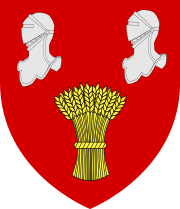
The Cholmondeley Family
Today’s generation of the Cholmondeley family bears a name that was brought to England by the migration wave that was started by the Norman Conquest of 1066. The Cholmondeley family lived in the township of Cholmondley in the parish of Malpas in Cheshire. The name is traditionally pronounced Chumley.
Early Origins of the Cholmondeley family
The surname Cholmondeley was first found in Cheshire at Cholmondeley, a civil parish and village where they were “descended from the Barons of Malpas, and directly from Robert de Cholmondelegh, second son of William Belward, lord of a moiety of the Barony of Malpas, and younger brother of David the ancestor of the Egertons; which Robert was seated at Cholmondeley in the reign of King John.” The Noble and Gentle Men of England; Th
The regal Cholmondeley Castle is now a country house located there with majestic formal gardens. The house has been a seat of the Cholmondeley family since the 12th century.
The parish of Delamere in Cheshire was home to a distinguished branch of the family. “On its inclosure it gave the title of Baron Delamere, of Vale Royal, to Thomas Cholmondeley, Esq., the proprietor of the ancient possessions of the Cistercian monks of Vale Royal, whose sumptuous abbey, completed in 1330 by Edward III., at a cost of £32,000, was dedicated to the Lord Jesus Christ, the Virgin Mary, St. Nicholas, and St. Nichasius, and in the 26th of Henry VIII.”
Motto: Cassis tutissima virtus
Motto Translation: Virtue is the safest helmet.
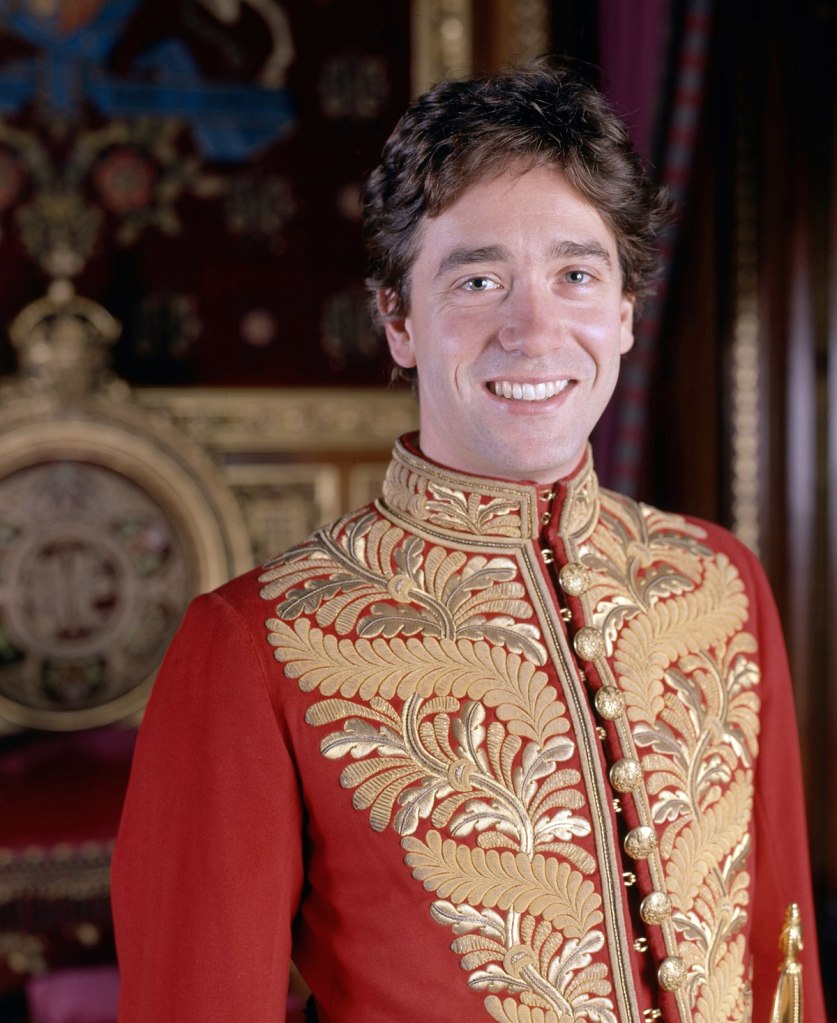
Meet Dave! Dashing David George Philip Cholmondeley, Lord Cholmondeley, 7th Marquess of Cholmondeley, KCVO, DL, Viscount Malpas, Earl of Rocksavage, Lord Great Chamberlain of the United Kingdom.
Early life and education
Lord Cholmondeley is a descendant of Sir Robert Walpole (1676–1745), the first Prime Minister of Great Britain. He is the son of Hugh Cholmondeley, 6th Marquess of Cholmondeley, and his wife, the former Lavinia Margaret Leslie. He is also a descendant of both the Rothschild family and the Sassoon family through his paternal grandmother, Sybil Sassoon. He has three elder sisters: the Ladies Rose, Margot (married Tony Huston), and Caroline (married Baron Rodolphe d’Erlanger).
Like numerous members of his family, Cholmondeley was educated at Eton College. He later took classes at the Sorbonne.
Career
Film industry
Lord Cholmondeley is a filmmaker. As David Rocksavage, he also appeared in a small part in Eric Rohmer‘s 1987 film, 4 aventures de Reinette et Mirabelle. His professional name is derived from his title of Earl of Rocksavage.
Political career
Cholmondeley became Marquess of Cholmondeley on 13 March 1990, upon the death of his father. Cholmondeley does not sit in the House of Lords for debates as he is currently on “leave of absence”, although he does attend the House of Lords in his role of Lord Great Chamberlain of England.
Lands and estates
Houghton Hall, Norfolk
The family seats are Houghton Hall in Norfolk, and Cholmondeley Castle, which is surrounded by a 7,500-acre (30 km2) estate near Malpas, Cheshire.
According to the Sunday Times Rich List in 2008, Cholmondeley has an estimated net worth of approximately £60m, attributed primarily to his inherited landholdings. Houghton Hall, ancestral home of the Marquesses of Cholmondeley since the establishment of the title in 1815, has now opened some of its rooms to the public.
Position at court
In 1974, Cholmondeley (then known as the Earl of Rocksavage) was a Page of Honour to the Queen at the age of 14. He relinquished this role upon reaching the age limit of retirement in 1976.
One moiety of the ancient office of Lord Great Chamberlain is a Cholmondeley inheritance. This hereditary honour came into the Cholmondeley family through the marriage of the first Marquess of Cholmondeley to Lady Georgiana Charlotte Bertie, daughter of Peregrine Bertie, 3rd Duke of Ancaster and Kesteven. The second, fourth, fifth, sixth and seventh holders of the marquessate have all held this office.
Cholmondeley began acting as the hereditary Lord Great Chamberlain to Her Majesty in 1990. In the Queen’s Birthday Honours List for 2007, Lord Cholmondeley was made a Knight Commander of the Royal Victorian Order (KCVO) for his 17 years of service as Lord Great Chamberlain.
Marriage and children
Lord Cholmondeley married (Sarah) Rose Hanbury, a 25-year-old fashion model, on 24 June 2009, their engagement having been announced the previous day. She is a daughter of Tim Hanbury, a website designer, and his fashion designer wife, Emma. The landed gentry Hanbury family lived at Holfield Grange, Coggeshall, Essex.
Her maternal grandmother is Lady Elizabeth Lambart, daughter of Field Marshal The 10th Earl of Cavan, who was one of the bridesmaids at the 1947 wedding of Princess Elizabeth; her paternal grandmother, Sara, was daughter of racing driver Sir Henry (‘Tim’) Birkin, 3rd Baronet.
Four and a half months after their wedding, on 12 October 2009, the Marchioness gave birth to twin sons, Alexander Hugh George and Oliver Timothy George. The elder son, Alexander, as heir apparent to the Marquessate, bears the courtesy title of Earl of Rocksavage; his brother is known as Lord Oliver Cholmondeley.
In March 2016, the Marquess and Marchioness had their third child, a daughter, Lady Iris Marina Aline Cholmondeley.
The Marchioness is a patron of the EACH charity, along with The Duchess of Cambridge.
See how these thieves keep their stolen lands and wealth derived from it well guarded and hidden from view, marrying into each other, sharing kids and titles and legacies and bestriding their empire in ritualised raids across fields and borders. Can anyone stop them?
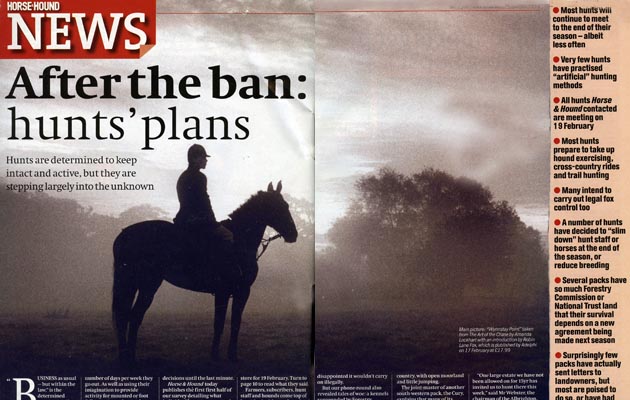
We recognise no deed of ownership, nor seal, nor warrant – we recognise no laws, nor jurisdictions for these are but the scribblings of men, abstract and weightless in the universe. The law is made by men like you and for men like you On 15 September 2004, MPs supported the second reading of the Hunting Bill in a free vote by 356 to 166. Parliament was suspended for a short time after five protesters got into the Commons chamber while MPs debated whether to vote for a ban. How they voted (Yes/No) Conservative: 6/137Labour: 318/3Lib Dem: 32/16Plaid Cymru: 0/4Ulster Unionist: 0/4Independent: 0/2 |
The Hunting Act 2004
The Hunting Act 2004 is the law which bans chasing wild mammals with dogs in England and Wales – this basically means that fox hunting, deer hunting, hare hunting, hare coursing and mink hunting are all illegal, as they all are cruel sports based on dogs chasing wild mammals.
The introduction of the Hunting Act followed an extensive and often exhausting campaign spanning 80 years, with the League Against Cruel Sports and our supporters at the forefront since 1924. In Scotland, hunting with dogs was banned earlier by a different law, the Protection of Wild Mammals (Scotland) Act 2002.
Securing the Hunting Act was a key moment in the history of animal protection legislation in the UK and public polling consistently shows it is a popular law. Yet, since its introduction, the Hunting Act has been the target of considerable attack from the pro-hunt lobby which has waged an on-going campaign to try and undermine the Act with the aim of getting it scrapped or weakened, and defied the Act by developing and promoting methods to circumvent it in the form of false alibies or illicit exploitations of its exemptions.
This sabotage of the law continues today.
ONE LAW FOR THEM!
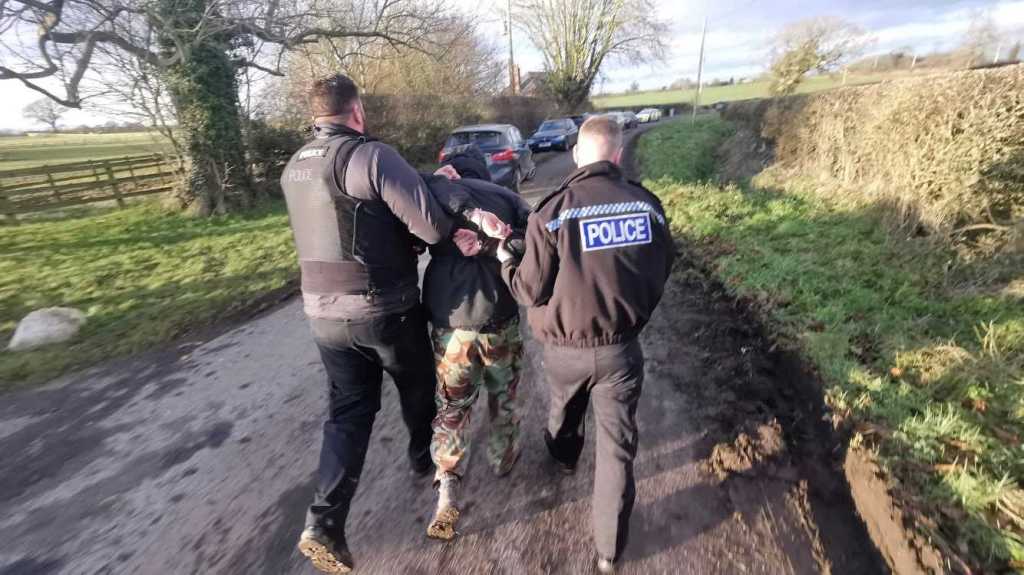
Despite overwhelming public opposition and a longstanding ban, fox hunting shows no signs of abating in the UK. The 2018 hunt season alone saw 550 reports of illegal hunting, though these figures only represent known incidents.
In 2014 it was found that 250,000 fox hunters attended Boxing Day hunts across the UK. In 2019, so far, at least 21 foxes have been killed by the hunt and 151 incidents of illegal hunting have been reported since the season began on November 1.
The Hunting Act, which prohibited hunting foxes and wild mammals with dogs, was approved by the UK’s parliament in 2003 with 362 MPs in favour and 156 against. The following year it became law. In 2017, the British people were surveyed on whether they continue to support the ban on fox hunting and the result was resounding – the highest margin ever recorded on the matter – 85% thought fox hunting should remain prohibited.
So if the ban is entering its 17th year, why is fox hunting still happening?
A Good Question!
The establishment sticks together – they call those that stand in their way ‘militants, extremists, hooligans, communists”
The Police say…
“It’s too difficult to enforce!”
And yet they can enforce the law to stop strikes and picket lines and demonstrations and protests – fracking for example.
“The law isn’t clear enough!”
But it’s clear enough to convict trespassers on ‘private’ property and to stop dog fighting and badger baiting and secure convictions for ‘poaching’
When a democratically elected politician dares to challenge these high bred lawbreakers then they face this;
CheshireLive website :
Attempts to make sure hunts are planned and conducted lawfully have been labelled a ‘ridiculous waste of money’ by pro-hunting campaigners. The Countryside Alliance has accused David Keane, Cheshire’s police and crime commissioner (PCC), of having an ‘obsession with hunting’ and called on him to spend his force’s resources on tackling ‘real crime’ instead.
It comes after Mr Keane commissioned an independent review into fox hunting last year, which put forward 11 recommendations to improve the way hunts are policed in Cheshire . Mr Keane put those recommendations to Cheshire’s new Chief Constable Darren Martland at a special meeting last Monday – and proposed that the force works with huntsmen, landowners and residents in future to draw up event plans which would help ensure hunts are conducted legally.
In a statement issued following the meeting, the Countryside Alliance said: “The Cheshire hunts operate entirely legally and have always cooperated with the police. They are not, however, going to be dragged into the ignorant and wasteful campaign which the PCC is pursuing. The PCC commissioned an expensive independent review of the policing of hunting, it made sensible recommendations, but those did not suit his political agenda so now he has made up some others.” Cheshire Police received 200 reports of incidents in the 2018-19 hunt season – including 51 alleged criminal offences, compared to 19 in 2017
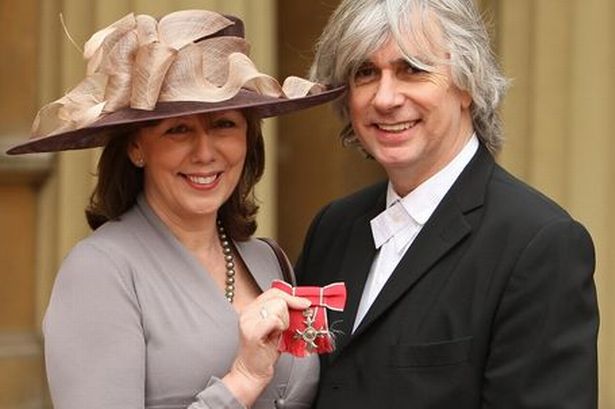
January 12, 2019 by NWHSA
CHESHIRE HOUNDS HUNT CHASE AND KILL FOX IN GROUNDS OF HOME OF HIGH SHERIFF OF CHESHIRE
On 1st January, a team of monitors witnessed the Cheshire Hunt chasing two foxes into the grounds of Tirley Garth in Willington, home of the High Sheriff of Cheshire Alexis Redmond MBE and her husband Phil, famous as creator of long-running TV shows Brookside, Hollyoaks and Grange Hill. We found evidence that at least one fox was killed in the grounds.
The incident was reported to police, who attended briefly. We have since attempted to speak to Mrs Redmond to discuss the matter, without success.
North West Hunt Saboteurs Association
The Canary
Cheshire Police investigated five incidents of foxes allegedly killed by a hunt during the last season. However, the police have said they’re dropping all the cases. And local activists said this has given hunts the “green light” to continue killing foxes.
“Complete mockery”
A national dialogue on hunting in early 2019 centred on Cheshire. It occurred after activists published images of foxes allegedly killed by a local hunt. Between 15 November 2018 and 5 February 2019, activists claimed the Cheshire Hunt killed five foxes. During one such incident on 5 January, Cheshire Hunt Saboteurs said it even caught a member of the hunt “kicking” a fox’s body into a river.
Activists took all five incidents to Cheshire Police. However, the force has dropped all five cases due to insufficient evidence of illegal hunting. Local paper CheshireLive reported that the “complexity” of the cases led to Cheshire Police seeking advice from the Crown Prosecution Service (CPS).
Police said:
The investigation team has now concluded that there is insufficient evidence that any of the incidents amounted to deliberate and intentional hunting, as required by the Hunting Act 2004. Consequently, no further action will be taken. All parties involved have been informed of the outcome.”
What we’re up against…
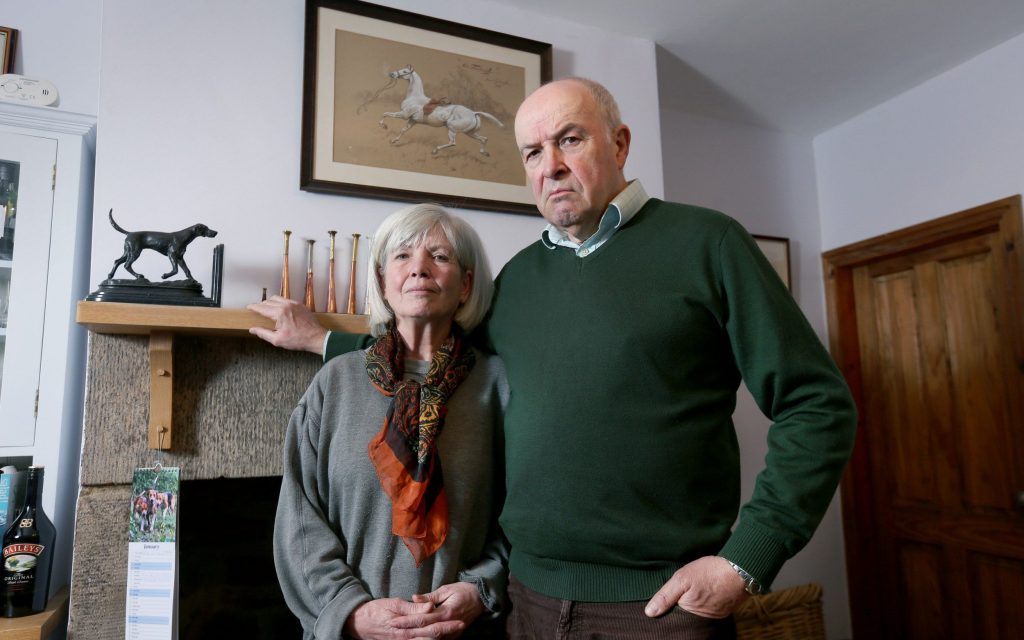
Immigration judge pleads not guilty to sab assault
Today Mark Davies plead not guilty to two charges of assault on sabs at Chesterfield Magistrates Court. The charges come after an incident which occurred at the 2019 New Year’s Day meet of the Barlow Hunt, which was attended by Sheffield and West Yorkshire Hunt Sabs.
Davies, ex master of the Barlow and secretary of the Pennine Foxhounds, is an immigration judge. In December 2018 he was professionally disciplined for prejudicial remarks against Iranians. Previously, he made the news after his appearance in a naked calendar, to raise money for the Pennine Hunt, alongside wife and current Barlow joint master Joan Williams, who is the ex-South Yorkshire Police Superintendant.
It Gets Worse…
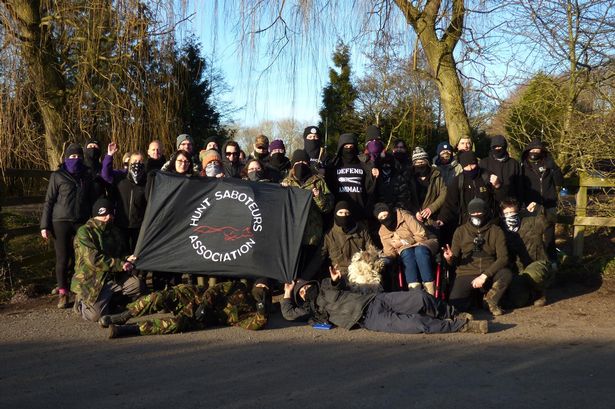
Boris Johnson has suggested extremism rules developed to tackle domestic terrorism could be applied to anti-foxhunting activists. Mr Johnson told a pro-hunting group that activists who disrupt their events could face rules developed by the Government in response to recommendations by the Commission for Countering Extremism. The Commission is considering the rise of far right, Islamic and other kinds of extremism.
So here we are – the prime minister of the country, alongside his fellow aristocratic and Hunt supporting Tory MPs are considering anti-terrorism legislation applying to hunting saboteurs. They are happy to see a parallel between those that detonate bombs in crowds of teenagers watching pop concerts and animal rights activists trying to prevent a harmless creature being ripped to shreds by a pack of dogs.
Vulpes
Oh Vulpes what have you ever done to deserve the wrath of man?
The day is never as bright as your eyes
The patterns of shifting lands can never contain your restless spirit
They will never stop chasing you until they are dead themselves
The Vulpine bloodline will flow into the dark future
Dedicated to the Cheshire and other Hunt Saboteurs, the League Against Cruel Sports, Cheshire Against Blood Sports and all the others that refuse to allow this cruel and barbaric practice to continue despite the ban.
